
Imagine: software entities capable of autonomously interacting with their environment, making decisions based on collected data, and executing specific scenarios with minimal human intervention. Fortunately, with the help of AI Agents technology, this reality is closer than you think. These intelligent agents are revolutionizing industries and changing the way we live. However, you may be curious: What exactly are AI Agents? How do they work? In this blog post, we’ll delve deeper into the world of AI Agents!
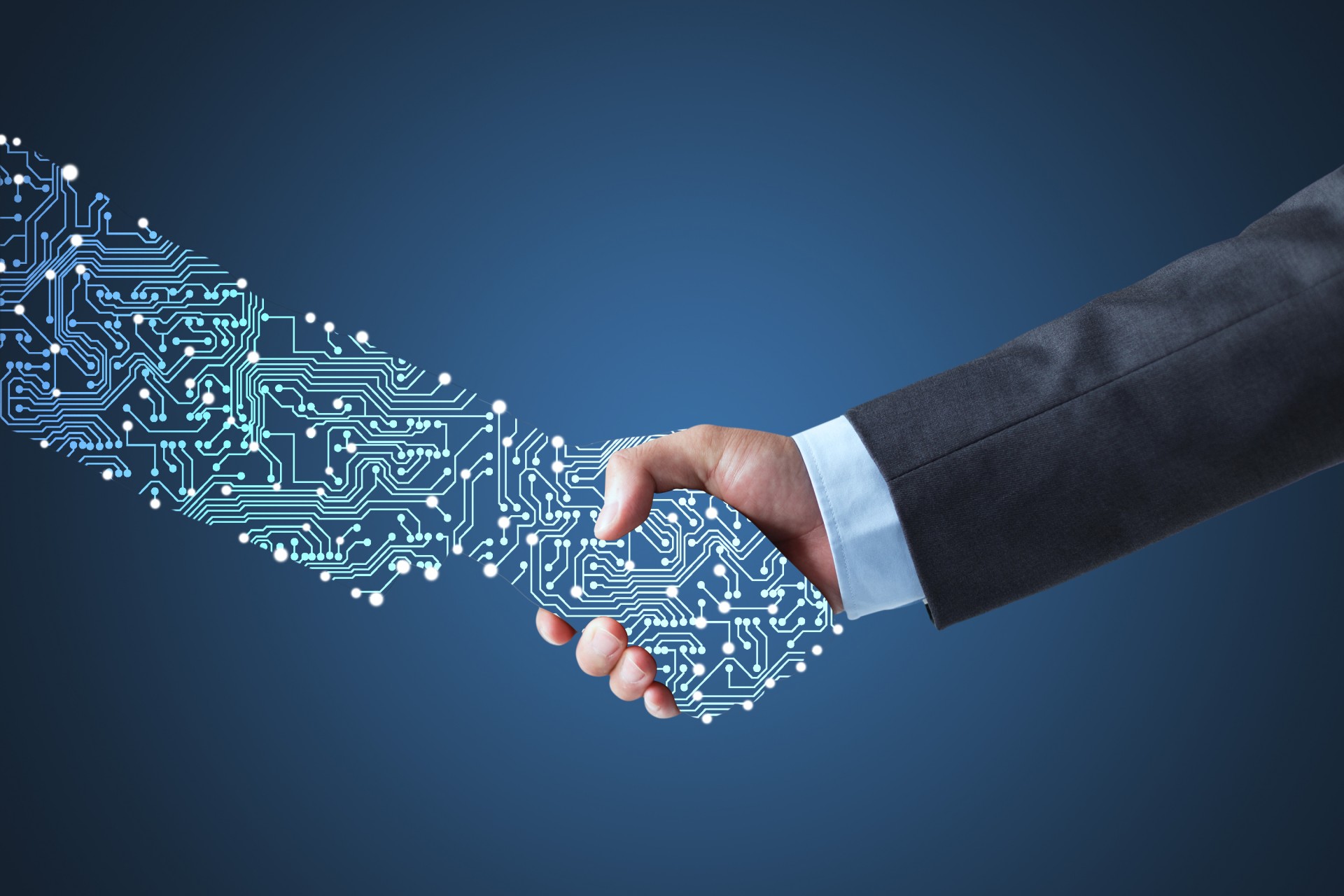
Artificial intelligence (AI) gives machines the ability to judge and perform tasks to assist humans in achieving certain tasks in certain business scenarios. goals, thereby significantly changing the way humans and computers interact. In the core system of artificial intelligence, we can pay attention to these intelligent entities called AI Agents (IA), which can perceive changes in the environment and analyze them to take reasonable actions to achieve the established goals.
Generally speaking, different types of AI Agents are designed to solve specific challenges and complete specific tasks. A deeper understanding of the different types of AI Agents is critical to building effective and efficient AI systems. By understanding the various AI Agents types, we can better understand their functions and application areas, and select the most appropriate AI Agents based on specific needs.
AI Agents can be specifically designed for a certain task, such as image recognition, speech recognition, or natural language processing. These Agents utilize advanced algorithms and models to parse input data and generate accurate output.
What needs to be rewritten is: Another type of artificial intelligence agent is a general agent, which has a wider range of intelligence and adaptability. These agents can handle a variety of tasks and domains and have the ability to learn and adapt. General-purpose agents are often based on machine learning and deep learning techniques to improve their performance and performance by learning and reasoning from large amounts of data
In addition to this, AI Agents can also way to classify. Some agents are autonomous, capable of sensing their environment, making decisions, and performing tasks independently. Other agents are collaborative, interacting with human users to provide help and suggestions by understanding their intentions and goals.
In fact, AI Agents have been around since the 1980s when computer scientists began exploring how to develop intelligent software that could interact like humans. Since then, the concept has evolved to include intelligent agents that can independently make decisions and complete scenario-specific tasks.
AI Agents are software programs designed to interact with their environment, perceive the data they receive, and act based on that data to achieve specific goals. AI Agents are capable of simulating intelligent behavior and can be as simple as a rule-based system or as complex as an advanced machine learning model. AI Agents use predetermined rules or trained models to make decisions and may require external controls or supervision.
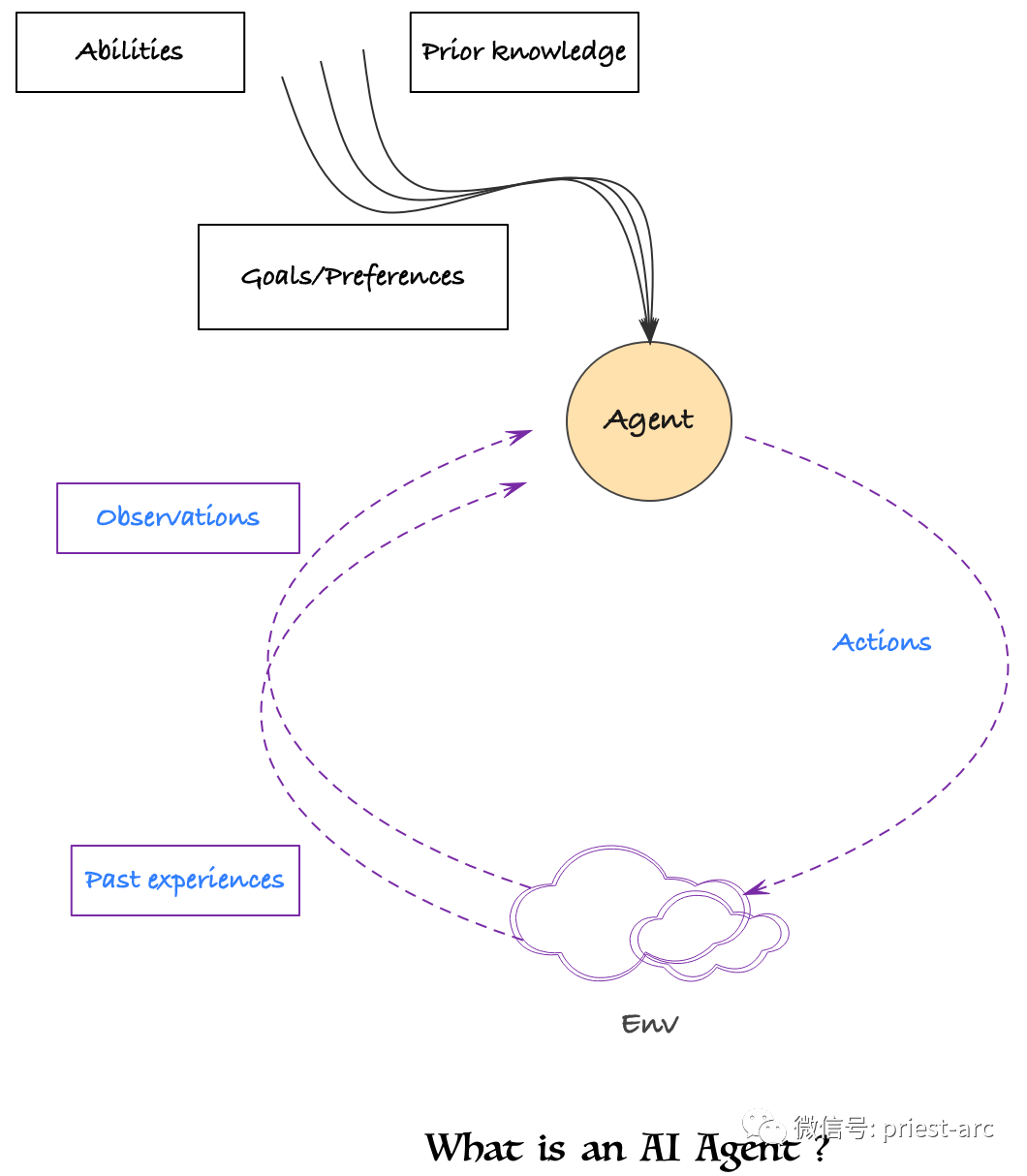
Relative to traditional AI Agents, autonomous AI Agents are advanced software programs that can run independently without human control. They can think, act and learn autonomously without constant input from humans. These agents are widely used in different industries such as healthcare, finance, and banking to make things run smoother and more efficiently. They can adapt to new situations, learn from experience, and use their own internal systems to make decisions.
With the continuous development of artificial intelligence technology, the capabilities and application fields of AI agents are also constantly expanding. To some extent, AI agents have become key tools in many fields, helping people solve complex problems and improve work efficiency. By continuously improving and optimizing the design and algorithms of artificial intelligence agents, we can expect more intelligent and autonomous agents to emerge, bringing greater help and innovation to all walks of life
at AI Agents have generated a lot of attention and enthusiasm over the past few months. An impressive example is AutoGPT, which has a staggering 140,000 stars on GitHub. This shows widespread interest and support for the open source AI Agents project
The field of AI Agents is developing rapidly, attracting the attention of more and more entrepreneurs and investors. Almost every week we can see new companies being established, focusing on the development and application of AI Agents
There are many types of AI Agents in this ecosystem, ranging from agents that review code (such as Sweep AI) to virtual personal assistants like Lindy, covering a variety of different functions and application areas. The emergence of these agents provides us with more choices and possibilities to meet the needs of different users and businesses.
To better understand the current state of this ecosystem, we took an overview of more than 50 AI agents and compiled them into a list. This list includes various types of agents in areas such as natural language processing, image recognition, speech recognition, intelligent assistants, etc. We evaluate and summarize the functionality, performance, and user feedback of these agents to provide users with reference and decision support
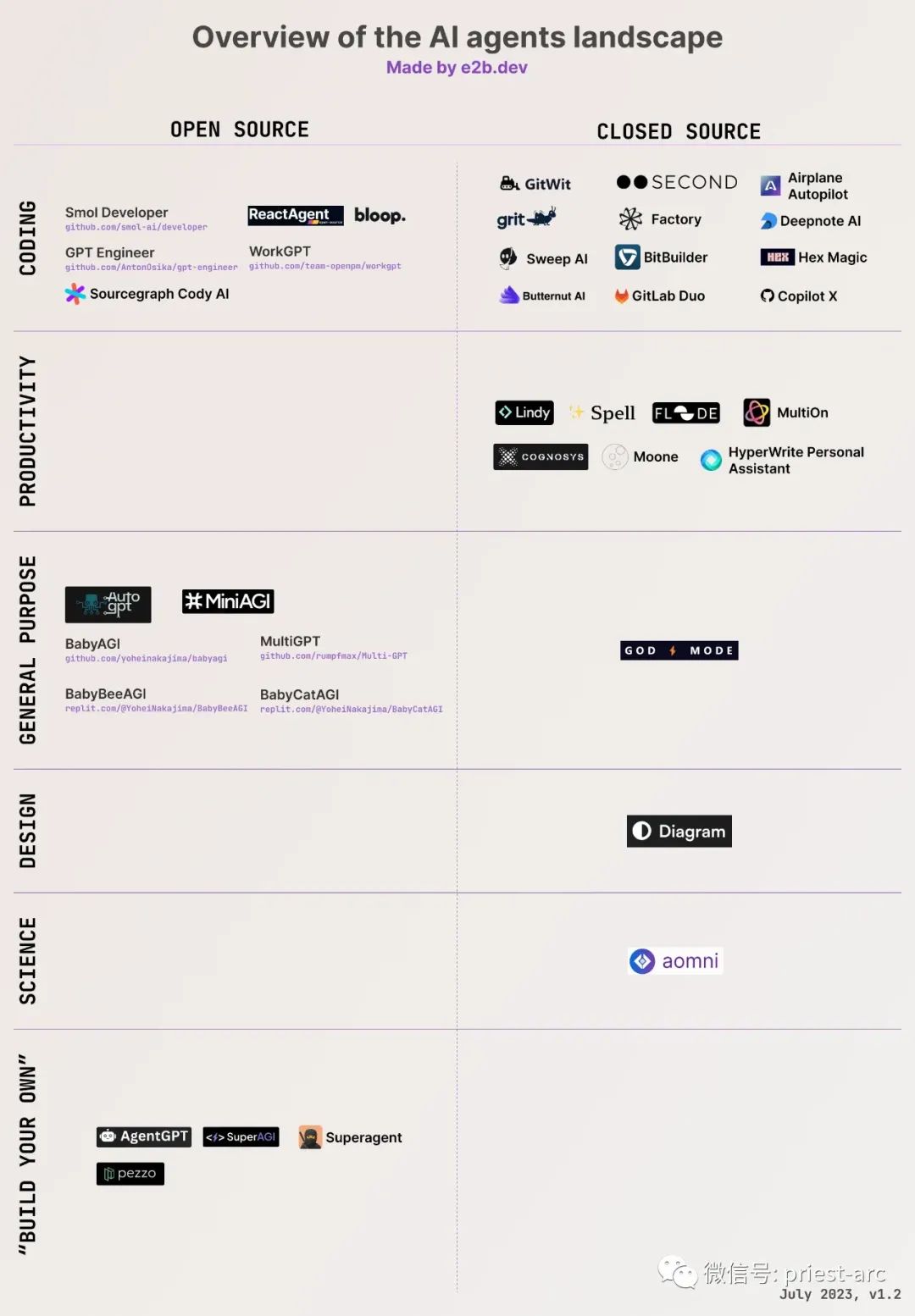
Generally speaking, artificial intelligence agents have the following characteristic factors, and the specific performance is as follows:
AI agents can perceive information in the environment, such as images, sounds, text, etc., and understand the meaning and context of this information. This involves using sensors, computer vision, speech recognition, natural language processing and other technologies to parse and understand input data
AI agents can make decisions and develop action plans based on perceived information and stored knowledge. They can use logical reasoning, statistical analysis, planning algorithms or machine learning techniques to evaluate the possible outcomes and potential risks of different actions and select the best action strategy
AI Agents have the ability to learn and improve themselves. They can learn from experience and continuously improve their performance and performance based on feedback information. Agents can use techniques such as supervised learning, reinforcement learning, and transfer learning to acquire new knowledge and adjust their decision-making and action execution processes to improve their intelligence and adaptability.
AI Agents can interact and communicate with humans or other agents, and can understand natural language instructions and generate Respond in natural language and communicate effectively with users using voice, text or other forms. This involves the application of natural language processing, dialogue systems, speech synthesis and other technologies.
Artificial intelligence agents are able to organize and store knowledge, and effectively retrieve and utilize this knowledge to support decisions and actions. It can use symbolic logic, graphical models, vector representation, etc. to represent and store knowledge, and utilize databases or other data structures to achieve efficient knowledge management
AI Agents have the ability to perceive different situations and can make corresponding adjustments according to changes in the situation. They can identify changes in the environment, adapt to new task requirements, and flexibly Adapt decision-making and action strategies to suit different scenarios and needs.
These characteristic factors together constitute the core capabilities of AI Agents, enabling them to demonstrate intelligence and adaptability in various tasks and fields. However, the characteristics of specific AI Agents may vary depending on the application domain, task requirements and design choices.
The internal structure of AI Agents may vary depending on specific applications and tasks, but generally includes the following core components. The following is a general internal structure diagram of AI Agents for reference:
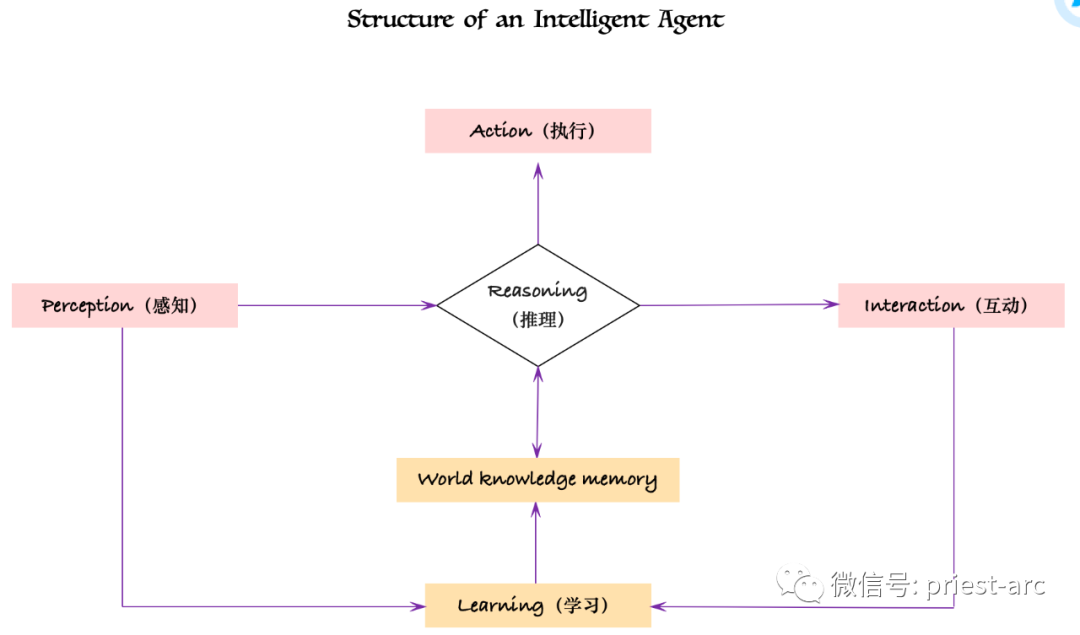
According to the above internal structure diagram, we can draw the following conclusions: AI The internal structure of Agents consists of four key parts, namely environment, sensors, actuators and decision-making mechanism
We will briefly analyze each part to better understand the role of the above components in the artificial intelligence agent
The external world that AI Agents live in is called the environment. Generally speaking, the environment can be a real physical environment or a virtual simulated environment. The environment provides a place for AI Agents to perceive and interact, which may contain various elements such as objects, other agents, and task goals. The characteristics and complexity of the environment directly affect the operation and decision-making process of AI Agents
Sensors are used by AI Agents for perception Components of the environment. As a support for various types of equipment or technology, such as cameras, microphones, sensor arrays, etc. Sensors can help AI Agents obtain various information in the environment, such as images, sounds, locations, etc. Through sensors, AI Agents can convert data in the environment into a processable form and provide input for subsequent decisions and actions.
Actuators are components used by AI Agents to perform actions or affect the environment. Actuators can be mechanical devices, motion control systems, speech synthesizers, etc. They transform actions into actual physical or virtual operations based on the decision-making results of AI Agents, thereby affecting or interacting with the environment. The type and properties of actuators depend on the specific application area and task requirements.
The decision-making mechanism is the core component used by AI agents to make decisions. This can usually be a rule-based system, machine learning model, reinforcement learning algorithm, etc. The decision-making mechanism receives data from sensors and analyzes these data according to predefined rules or through learning and reasoning, ultimately generating appropriate decisions. These decisions may involve choosing a specific action, planning future strategies, or adjusting the agent's internal state
AI Agents are able to perceive the environment through the interaction of the environment, sensors, actuators, and decision-making mechanisms , analyze information, make decisions, and execute actions to achieve specific goals. The design and optimization of this internal structure is crucial to realizing intelligent, autonomous AI Agents and plays an important role in various application fields, such as self-driving cars, intelligent robots, voice assistants, etc.
#When an AI agent begins to perform a specific task, it usually needs to follow a series of steps. These steps include sensing the environment, processing input data, making decisions, planning and executing actions, and learning and improving. The following is a detailed working principle architecture diagram:
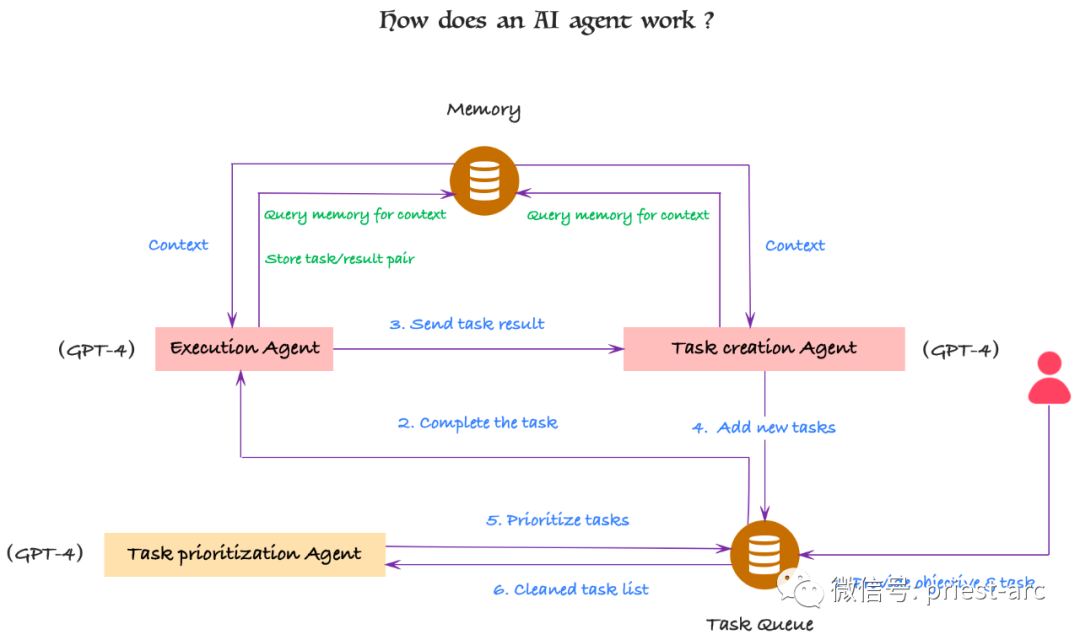
The specific implementation process of AI Agents mainly involves the following activities, specifically:
First, AI Agents will perceive the environment through sensors or other data sources. Sensors can include visual sensors (such as cameras), auditory sensors (such as microphones), physical sensors (such as touch sensors), etc. These sensors help the agent obtain information in the environment, such as images, sounds, locations, etc.
In this stage, AI Agents use appropriate knowledge representation methods to organize and store the information obtained from the environment . This information may include prior knowledge, learned patterns, or rules. Common knowledge representation methods include symbolic logic, graphical models, vector representations (such as word embeddings), etc. Through effective knowledge representation, AI Agents are better able to understand and utilize information in the environment.
Based on the perceived environmental information and stored knowledge, the AI agent generates appropriate actions through a decision-making mechanism . This may include using logical reasoning, statistical analysis, planning algorithms or machine learning techniques to assess the possible outcomes and potential risks of different actions. The decision-making process is designed to enable an agent to choose the best action to achieve its goals
In this step, the agent develops a plan or series of steps to achieve its goals. Once decision-making is complete, the AI agent will perform actions and interact with the environment. This might involve controlling actuators (such as a robot's motors), sending instructions (such as speech synthesis for a voice assistant), or communicating with other agents. After executing an action, the agent observes the execution results and uses it as feedback to adjust the next decision
After completing the above execution actions, AI Agents obtain feedback through interaction with the environment. This feedback can come from direct observations in the environment, or from instructions and evaluations by human users or other agents. Agents use this feedback to learn and improve their behavior. This may include using techniques such as supervised learning, reinforcement learning, or transfer learning to adapt decision-making and action execution processes to improve agent performance and adaptability.
In actual business environments, artificial intelligence agents have demonstrated a wide range of applications in various fields and have had a significant impact on our daily lives
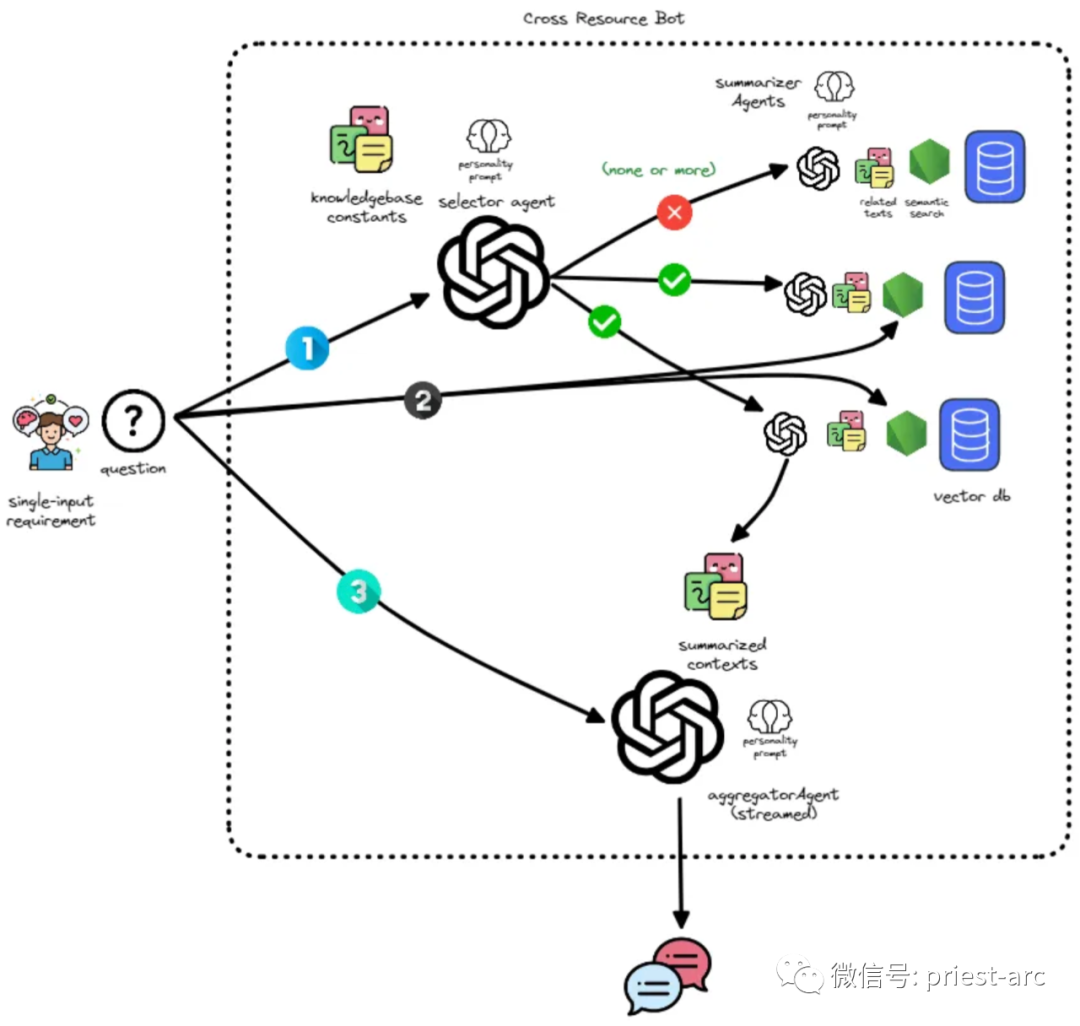
At present, it is mainly reflected in the following aspects, specifically:
AI Agents have extensive and far-reaching applications in the field of natural language processing. For example, smart voice assistants such as Siri, Alexa, and Google Assistant leverage speech recognition and natural language understanding technologies to enable users to interact with devices, obtain information, and perform tasks through voice. This allows people to easily control smart home devices, check the weather, send messages, etc., greatly improving the convenience of daily life.
The application of AI Agents in the field of robotics is also very significant. Intelligent robots can sense their environment, understand voice commands, perform tasks, and interact with humans. This technology has a wide range of applications, including industrial automation, medical assistance, home services, and more. For example, intelligent driverless cars are gradually becoming a reality, using perception technology and decision-making capabilities to achieve autonomous navigation and safe driving
In the fields of e-commerce and entertainment, AI agents provide users with customized experiences through personalized recommendation systems. These systems use machine learning and data mining technologies to analyze users' historical behaviors and preferences, and provide personalized product recommendations, music recommendations, movie recommendations, etc. This not only improves user satisfaction, but also promotes sales and user engagement growth
AI Agents play an important role in various fields, including medical diagnosis, financial risk management and intelligence City management, etc. In the medical field, AI Agents can assist doctors in disease diagnosis and prediction, improving treatment effects and patient survival rates. In the financial field, AI Agents can help financial institutions better manage risks and make investment decisions by analyzing large amounts of data and identifying patterns. In smart city management, AI Agents can monitor traffic flow, optimize energy utilization and improve urban planning, improving the sustainable development of the city and the quality of life of residents
The above scenario examples show that AI The wide application of Agents in different fields is already changing our daily lives. With the continuous advancement and innovation of technology, we can expect that AI Agents in more fields will bring us more convenience, efficiency and intelligent experience.
The above is the detailed content of AI Agents Technical Analysis: A Comprehensive Article. For more information, please follow other related articles on the PHP Chinese website!
 Application of artificial intelligence in life
Application of artificial intelligence in life
 What is the basic concept of artificial intelligence
What is the basic concept of artificial intelligence
 The difference between pascal language and c language
The difference between pascal language and c language
 How to solve Permission denied
How to solve Permission denied
 What are the commonly used third-party libraries in PHP?
What are the commonly used third-party libraries in PHP?
 Internet time query
Internet time query
 How to turn off windows security center
How to turn off windows security center
 How to open csv format file
How to open csv format file
 How to register on Binance
How to register on Binance




